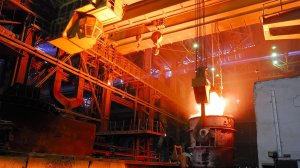In designing the Steel Master Plan (SMP), it is imperative to build consensus on a policy that can aid the creation of a competitive, dynamic and inclusive stainless steel industry, which can provide a stable platform for investment, growth and job creation, says Southern Africa Stainless Steel Development Association (Sassda) acting executive director Michel Basson.
The SMP has been prepared to support and anchor the implementation of the reimagined industry strategy, and the Economic Reconstruction and Recovery Plan launched by President Cyril Ramaphosa in October 2020.
The first draft of the SMP, which was circulated for comment on October 6, 2020, for a period of time, was the outcome of discussions held between industry stakeholders and government facilitators.
Basson states that the first draft incorporates feedback received from industry and specific public entities.
Trade, Industry and Competition Minister Ebrahim Patel convened the first Steel Oversight Council to table this revised document and consider an implementation roadmap.
The roadmap will cover the immediate priorities from the first draft, setting out the areas of focus within the first six months, the first year and the first three years.
Basson notes that the key thrust of the SMP is a collaborative effort among social partners, focused on fast-tracking implementation and assisting government institutions to be more agile and responsive.
He says government is mindful of the need to build a broad consensus on measures to rebuild the entire value chain. To do so, the SMP must be in place to continually review, adapt and adjust, based on the experience gleaned from implementation.
Sassda market intelligence specialist Lesley Squires states that the SMP builds on the “excellent” work of and proposed measures identified by the Steel Task Team in 2016, but sets out mechanisms to accelerate the plan and make the previous measures more effective to achieve the desired impact.
Since 2016, neutral parties have been conducting extensive research to identify areas of economic development.
The research into growth measures comprised areas such as an infrastructure drive, localisation, export promotion, greening the industry, developing industry value chains and ease of doing business.
The SMP proposes that the industry agrees to a target to reach carbon neutrality by 2050, especially for steel mills, foundries, forges, smelters and other power-intensive processes, notes Basson.
“In Africa, there is only one stainless steel mill, thus the contribution to the carbon neutrality of the South African steel industry would be small, but effective.”
The green economy also provides opportunities for innovation and the development of new products, and this includes the future use of stainless steel, he adds.
“There are opportunities in the development of renewable energy, water recycling, desalination, the building of dams, pipelines and reticulation.”
Green processes in production are likely to become a significant competitive advantage, especially in the export market.
Further, an investigation was undertaken on issues that can stabilise the industry, such as capacity development, funding and input costs, Squires adds.
The execution of the plan is guided by a steering committee comprising of government, the private sector and labour working together to ensure positive outcomes.
“It is Sassda’s mandate to promote and grow the local consumption of stainless steel to contribute to economic growth and job creation,” Basson concludes.
Edited by: Zandile Mavuso
Creamer Media Senior Deputy Editor: Features
EMAIL THIS ARTICLE SAVE THIS ARTICLE
ARTICLE ENQUIRY
To subscribe email subscriptions@creamermedia.co.za or click here
To advertise email advertising@creamermedia.co.za or click here















